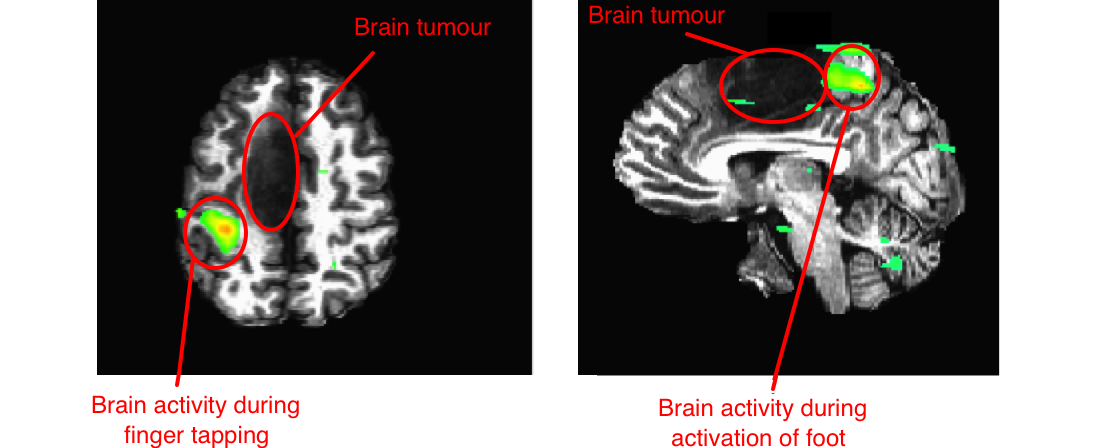Background and Industrial Relevance
Functional magnetic resonance imaging (fMRI) has since 1992 been a popular tool for studying the human brain, as it can non-invasively image the brain at a rather high spatial resolution, without using any ionizing radiation. fMRI is based on the fact that the blood has different magnetic properties during activity and rest, which can be detected using an extremely strong magnetic field (1.5 - 7 Tesla) available in an MR scanner. Some 40,000 fMRI papers have been published according to PubMed, and these comprise technical papers describing fMRI analysis, as well as medical papers which for example compare the brain activity of healthy controls and subjects with some disease. Despite the popularity of fMRI as a research tool, fMRI is rather seldom used for single subjects in the clinical domain. From an industrial perspective, it is necessary to provide an fMRI software that yields reliable results, and to integrate the results (images of brain activity or brain connectivity) into existing clinical softwares and workflows. In this project, the focus will be on how to use fMRI to improve brain tumour treatment planning, one of the few clinical applications of fMRI, by integrating fMRI into the company Elekta's software Leksell GammaPlan.Project Description
This project consists of two parts; to develop reliable statistical methods for brain activity and brain connectivity estimation using fMRI, and to integrate the fMRI results in Elekta's software for brain tumour treatment planning. Developing statistical methods is important, especially for clinical applications where even small errors can lead to serious consequences. In my recent work I found that the most common statistical methods in the fMRI software packages SPM, FSL and AFNI can give erroneous results (e.g. imprecise control of false positives). If existing statistical methods cannot be trusted for research, how can they be trusted for clinical applications? The project has the following aims:
- Reduce gamma radiation in important brain areas close to brain tumours, using task fMRI data to define organs/areas at risk
- Develop Bayesian statistical methods for analysis of clinical fMRI data, to be able to incorporate prior information, to propagate the uncertainty generated in each step of the fMRI analysis, and to obtain an uncertainty measure of the brain activity
- Use the uncertainty in each voxel/brain area (generated by the Bayesian algorithms), to further improve the tumour treatment planning, by for example down weighting brain areas with a high uncertainty
- Estimate functional brain connectivity using resting state fMRI, to also add important brain networks as organs at risk
Visions and Plans
The short term plan is to use Elekta's software for tumour treatment planning, with and without fMRI data. The standard approach is to plan the tumour treatment using only a high resolution anatomical volume acquired with an MR scanner. Brain areas corresponding to important functions will be estimated using existing fMRI tools, the results will then be transformed to fit Elekta's software, and finally be used as organs at risk during the optimization of the treatment plan. This will prevent gamma radiation from reaching the important brain areas. Tumour treatment plans generated with the standard approach (using only anatomical data) and the new approach (using anatomical data and fMRI data) will be compared, to see how much the radiation can be reduced in the important brain areas.
In a longer perspective, the plan is to test and develop new Bayesian methods for estimating the brain activity, and to determine how to use the uncertainty of the brain activity when generating a treatment plan. To incorporate brain connectivity measures, using resting state fMRI and diffusion MRI, is also important, as damaging one part of the brain can damage a brain network, and thereby indirectly affect distant brain areas.
Research Environment and Industrial Cooperation
The project will be carried out at two departments at Linköping University; the department of biomedical engineering (IMT) and the department of computer and information science (IDA). The research in this project will be performed in close collaboration with the company Elekta (Stockholm), as they develop hardware (gamma knives) and software (GammaPlan) for tumour treatment.

